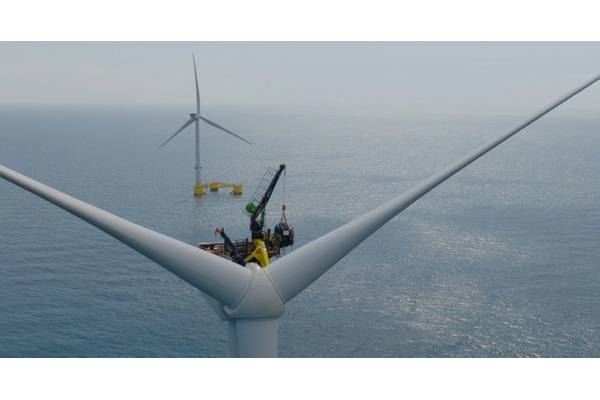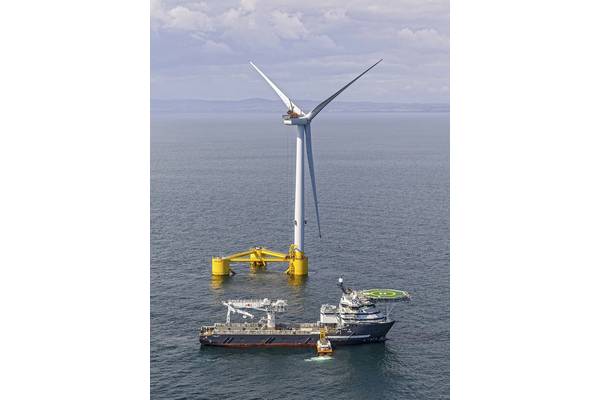

A group of industry specialist companies has achieved a world first for the wind industry, with a major component exchange (MCE) being performed on an offshore floating wind turbine while it remained on site at the Scottish Kincardine offshore wind farm, located south east of Aberdeen.
The new, more cost-effective, process was delivered through a collaboration of technologies and expertise from LiftOff, Vestas, Dragados, Kincardine Offshore Windfarm Limited (KOWL) and Cobra Wind International (CWIL).
The wind energy industry has been seeking technological alternatives to improve processes when generator repairs or replacements are required.
The recently completed in-situ generator exchange on a Vestas V164-9.5MW turbine, using LiftOff up-tower crane technology and specialized teams from LiftOff and Vestas, has proven that major component exchanges can be done offshore, without the need for massive offshore cranes, or the need to tow the wind turbine to port.
The full project was executed from an offshore support vessel (OSV), supported by crew transfer vessels (CTVs).
Applying the new process has eliminated the need for tow-to-port operations, which has previously been the only way to perform MCEs at floating offshore wind farms. Tow-to-port operations generate a large carbon footprint, involve high costs, and create extended periods of turbine downtime.
The 50 MW Kincardine Offshore windfarm, owned by Dragados, is 15km off the coast of Aberdeenshire, Scotland. It became fully operational in 2021 and provides green electricity to Scotland’s grid.
To perform the process, a GenHook up-tower crane, supplied by LiftOff of the Netherlands, was temporarily installed atop the Vestas turbine.
After Vestas prepared the wind turbine generator and decommissioned the old generator, LiftOff lifted it from the nacelle and safely lowered it to the deck of the floater, where it was then transferred to the OSV. Using the same methodology, the replacement generator was then transferred to the floater and lifted into the nacelle using the GenHook crane.
During the operation, load-control mechanisms were installed to control the load during the lifting activities, as the floating wind turbine is constantly moving due to wind, waves, and currents.
The team planned the operations with utmost care, using several weather forecasts as well as real-time motion monitoring to assure a safe operation. The entire execution phase of the project with the OSV was accomplished in less than a month, including full mobilization and demobilization of all equipment.
“By pushing the boundaries of innovation and embracing the requirement to improve previous processes, we have achieved a world-first technical solution that redefines the future for the renewables industry.
“In Dragados we are delighted to have produced a solution that can be implemented on-site, which will negate the requirement to disconnect and tow the turbine ashore for repair.
“This solution for repairs has the potential to have positive sector-wide impact. With the floating offshore windfarm industry still in a fledgling state, it is crucial owners and operators across the world learn from projects such as this and share best practices,” said José Polimón Olabarrieta, Dragados Project Manager and General Manager at KOWL.